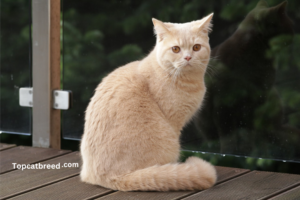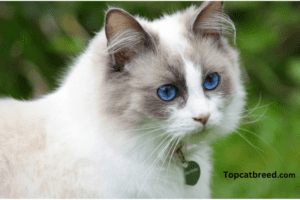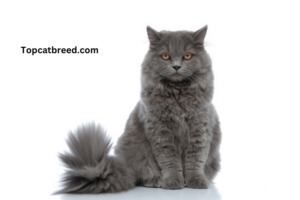These cats with big ears have personalities just as large and are a great addition to any when a cat is out in the wild, its large ears can help it survive. They function similarly to satellite dishes, allowing felines to detect even the smallest sounds when hunting. About to embark on a journey to discover 13 cat breeds with big ears known for their charming oversized ears. These cats are not only cute but also gifted with exceptional hearing abilities. From the Siamese cats with their striking blue eyes to the exotic Chaise breed, we’ll delve into the world of feline friends with remarkable ears. These are cat breeds with big ear
Cats rely on their ears to catch the subtle sounds that fill their world, from the tempting crinkle of a treat bag to the gentle footsteps of their human friends. Join us on a journey through this guide where we explore the fascinating world of cat breeds, each with its own special traits and charming personalities. Whether you’re a cat lover or simply intrigued by these furry companions, come along as we uncover the distinctive qualities that make these big-eared cat breeds truly exceptional. Prepare to be charmed as we explore the world of cat breeds with big ears, encountering their distinctive features and delightful companionship along the way
1-Siamese Cat

The Siamese cat, with its rich history rooted in Siam (now Thailand), is a breed of unique distinction . Siamese cats are revered for their exquisite, slim, and lithe bodies, adorned with large, angular ears that accentuate their striking looks. Their large, almond-shaped blue eyes are equally captivating. Siamese cats are highly sociable, forming deep bonds with their human companions. They are renowned for their vocal nature, often engaging in expressive conversations with their owners.
Meeting the living needs of Siamese cats involves recognizing their need for mental stimulation and interaction. Their global presence comes in various color points, including seal, chocolate, blue, and lilac, each contributing to their allure. Siamese cats, with their captivating looks and engaging nature, continue to enchant cat enthusiasts, leaving an indelible mark on the world of feline companionship.
Size: Siamese cats fall within the small to medium size range, with a sleek and elegant build.
Height: 8-10 inches (20-25 cm)
Weight: Typically weighing between 6 to 14 pounds, Siamese cats are slender yet muscular.
Lifespan: These feline beauties boast a commendable lifespan, often living for 15 to 20 years, making them cherished family members for many years.
2-Oriental Shorthair
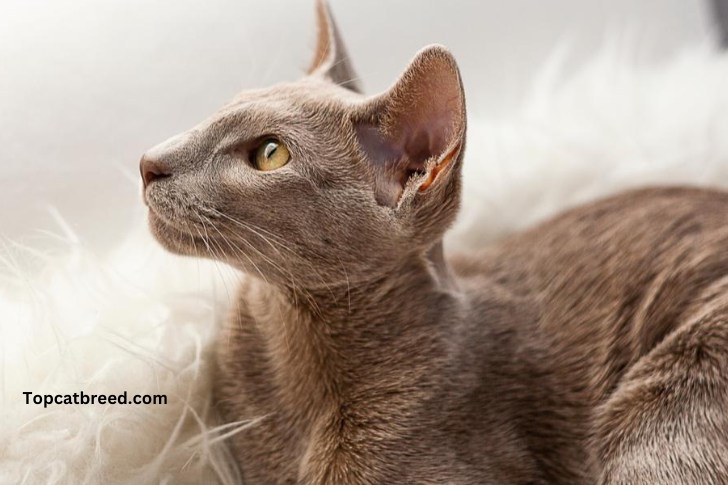
Oriental Shorthair are Bred from Siamese cats in the mid-20th century, they’re known for their slender, colorful coats and lively personalities. Oriental Shorthair cats, often considered the Siamese’s close relatives, share the same stunningly large ears. What distinguishes them is their wide range of coat colors and patterns, which make them a veritable palette of feline beauty. They are intelligent, social, and vocally expressive, just like Siamese cats, and form strong bonds with their human families.
Oriental Shorthair are Known for their sleek appearance and vibrant personalities, Oriental Shorthairs thrive on social interaction. These cats demand mental stimulation and affection, often forming strong bonds with their owners. With their slender bodies and large ears, they are agile and playful, making them a lively addition to any household.
Size: These cats are of medium size, with elegant, slim bodies.
Weight: Weighing between 5 to 10 pounds, Oriental Shorthairs are lightweight yet muscular.
Lifespan: They typically live for 12 to 18 years, providing their families with enduring companionship.
3-Sphynx Cat
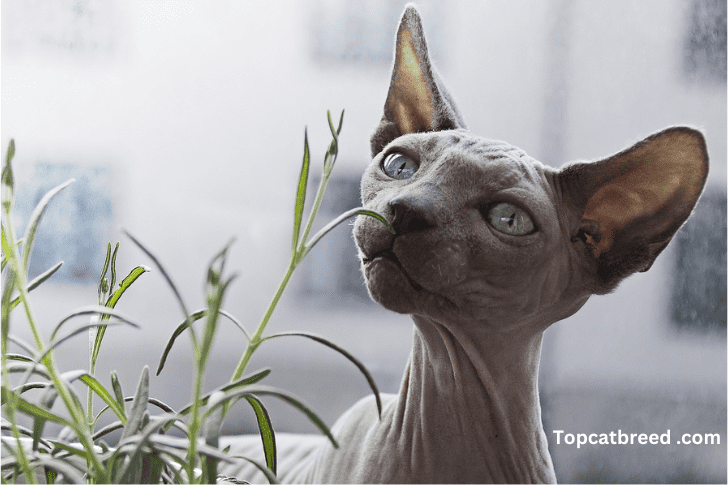
Sphynx Cats are born in the 1960s, Sphynx cats are famous for their hairless appearance, originating from a natural genetic mutation The Sphynx is a unique breed with hairless bodies and oversized ears that exude an otherworldly charm. Their skin feels warm to the touch and is prone to sunburn, making them the perfect indoor companions. Despite their lack of fur, they are incredibly affectionate and demand attention, often being likened to little heat-seeking missiles.
The Sphynx, hairless and distinctive, is surprisingly warm to the touch. Contrary to popular belief, they require regular bathing to remove excess oils on their skin. Despite their lack of fur, Sphynx cats are known for their love of warmth and attention, often seeking out cozy spots and human companionship.
Size: Sphynx cats are of medium size, with well-proportioned bodies.
Weight: They weigh between 6 to 12 pounds, which includes their solid and muscular frame.
Lifespan: Sphynx cats typically live for 8 to 14 years, providing years of unique companionship.
4-Peterbald
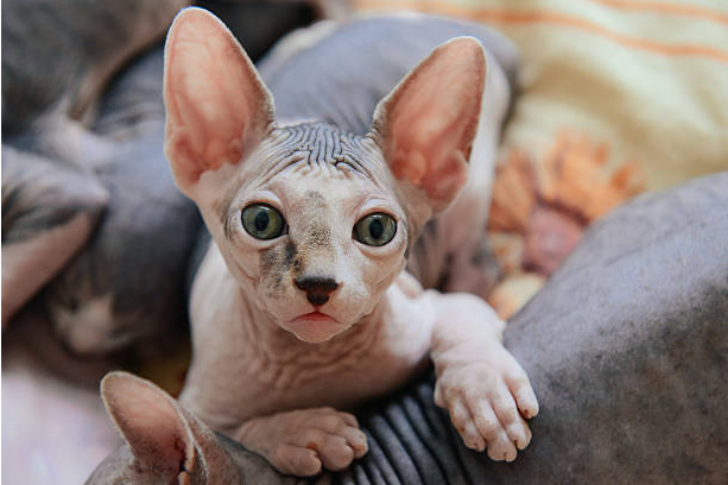
Peterbald are Emerging in the late 20th century, Peterbald cats are known for their hairlessness, friendly nature, and diverse coat types. The Peterbald, another hairless breed, possesses large ears that enhance their unique appearance. They come in various coat types, from completely bald to having a fine down, and they often have an exotic, almost mystical look.
Peterbalds are agile and playful, enjoying interactive games and forming strong bonds with their human companions. Recognized for its unique coat ranging from bald to a fine texture resembling peach fuzz, the Peterbald is a graceful and elegant breed. These cats thrive on human interaction and earn descriptions as affectionate and extroverted. Their playful nature and adaptability make them well-suited for families.
Size: Peterbalds are of medium size, with a graceful and agile build.
Weight: Weighing between 6 to 12 pounds, they have a solid yet lightweight frame.
Lifespan: These feline beauties typically live for 10 to 15 years, providing lasting affection and entertainment.
5-Cornish Rex
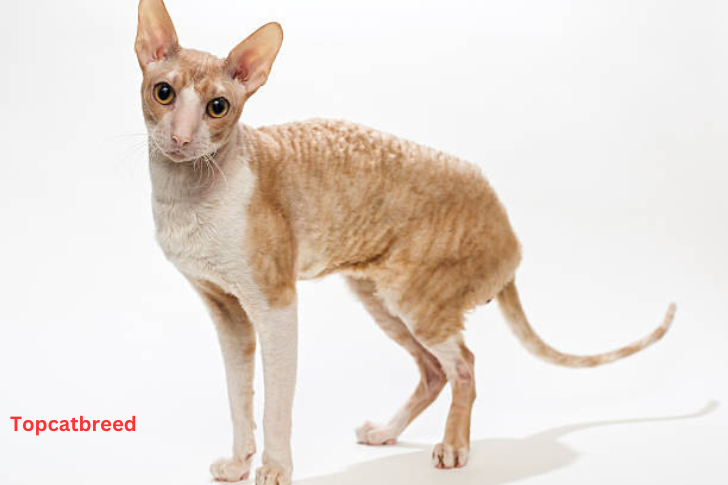
Cornish Rex are Originating in the 1950s, they have distinctive curly fur due to a genetic mutation, making them stand out in the cat world. The Cornish Rex’s large ears pair perfectly with their soft, wavy coats, creating a unique and endearing appearance. Known for their playful and affectionate nature, these cats bring joy with their agility and a knack for fetch. Their inquisitive spirit leads them to explore every corner, making each moment with them an adventure.
With their distinctive curly coat, Cornish Rex cats are known for being active and mischievous. They enjoy climbing and exploring, demanding mental stimulation. Despite their short coat, they may need extra warmth due to their higher metabolism, making them cozy companions in cooler climates.
Size: Cornish Rex cats are small to medium in size, with slim and elegant bodies.
Weight: They typically weigh between 6 to 10 pounds, making them lightweight and agile.
Lifespan: Cornish Rex cats enjoy a lifespan of 11 to 15 years, providing years of love and amusement.
6-Devon Rex
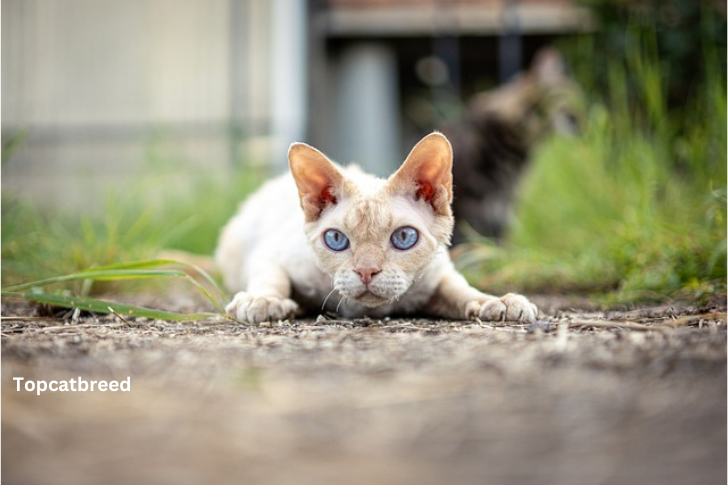
Devon Rex are Developed in the 1960s, Devon Rex cats are recognizable by their large ears, short curly fur, and playful personalities. The Devon Rex, like the Cornish Rex, has large ears and a distinctive, curly coat. Their unique appearance, coupled with their playful personality, makes them utterly endearing. They are known for their curiosity, often engaging in playful antics and seeking the spotlight.
Size: Devon Rex cats are small to medium in size, with a slender and playful build.
Weight: They weigh between 6 to 9 pounds, making them lightweight and agile.
Lifespan: These charming felines typically live for 10 to 15 years, creating countless heartwarming moments.
7-Bengal Cat
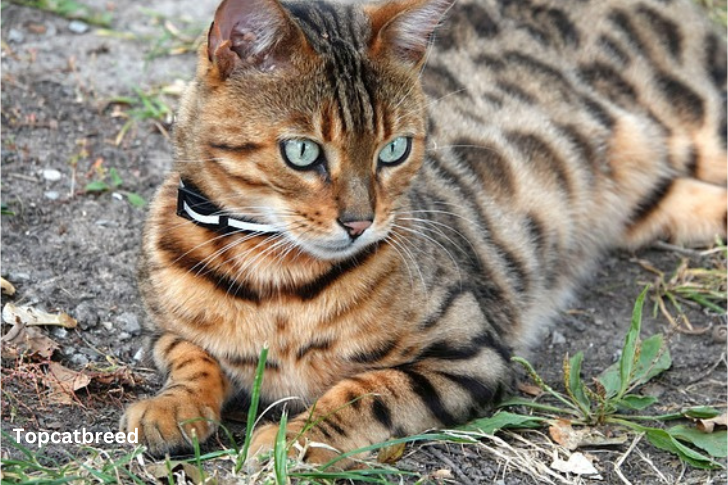
Bengal Cat: Created in the 1960s by breeding an Asian leopard cat with domestic cats, Bengal cats have distinctive leopard-like spots. Characterized by their assertive and territorial nature, these cats possess a truly unique and exotic appearance, sometimes perceived as aggression. Boasting large, pointed ears and distinctive spotted coats that strikingly resemble those of wild leopards, their wild appearance is complemented by their highly active nature.
Bengals require ample playtime and mental stimulation, often enjoying games of fetch and even water play. Bengals are captivating with their distinctive spotted or marbled coat, resembling wild leopards. Highly energetic and intelligent, they thrive on play and mental stimulation. Bengals enjoy interactive activities and may appreciate access to outdoor enclosures to satisfy their adventurous spirit.
Size: Bengals are medium to large in size, with well-muscled and athletic bodies.
Weight: They typically weigh between 8 to 15 pounds, reflecting their muscular build.
Lifespan: Bengal cats generally live for 10 to 16 years, making them dynamic companions for years to come.
8-Caracat
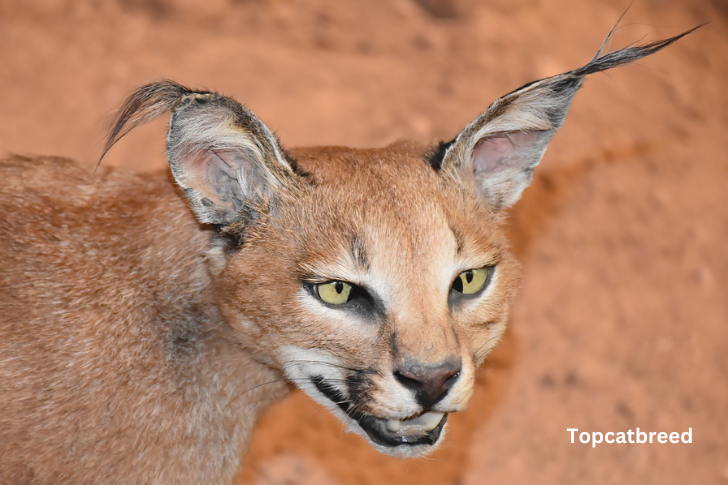
Caracat are relatively new breeds .Caracats are a cross between a Caracal and an Abyssinian cat. Caracats are a rare and exotic breed with large, wild-looking ears. They have a strong, well-built physique that mirrors their distant wild ancestors. Caracats are known for their friendly and loving nature, often forming deep bonds with their human families.
A hybrid of a Caracal and a domestic cat, the Caracat combines wild and domestic traits. While their appearance is striking, their needs can be challenging, requiring specialized care. They may have specific habitat and dietary requirements, making them a unique choice for experienced and dedicated cat owners.
Size: Caracats are of medium to large size, with a robust and powerful build.
Weight: They typically weigh between 12 to 20 pounds, reflecting their muscular and sturdy frame.
Lifespan: These captivating felines generally live for 12 to 16 years, providing long-lasting companionship and affection.
9-Maine Coon
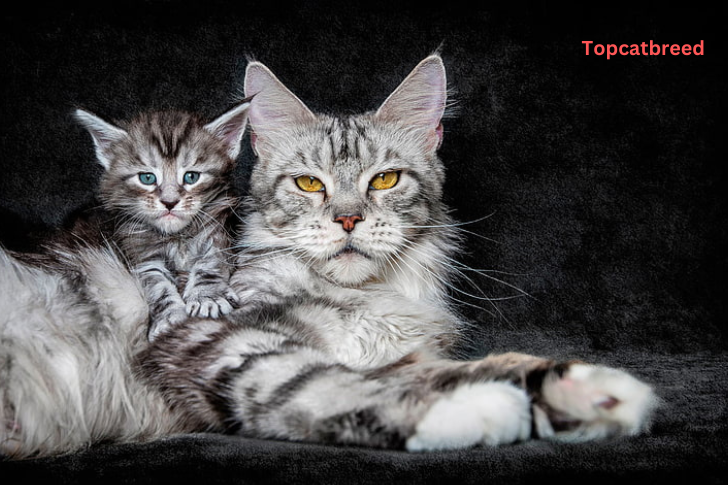
The Maine Coon cat, wrapped in legends and folklore, is celebrated as the gentle giant among feline breeds Hailing from the United States .Maine Coon cats, with their tufted ears and large, robust bodies, are one of the largest domestic cat breeds. Despite their massive size, they are gentle giants.
Maine Coon cats are highly sociable and form strong bonds with their human families. They might exhibit assertiveness when they perceive a threat to their loved ones or their environment.”
Size: Maine Coons are large to extra-large in size, with a solid and imposing build.
Weight: They typically weigh between 13 to 18 pounds, reflecting their substantial and well-muscled frame.
Lifespan: Maine Coon cats enjoy a commendable lifespan of 12 to 15 years, making them beloved family members for many years.
10-Scottish Fold
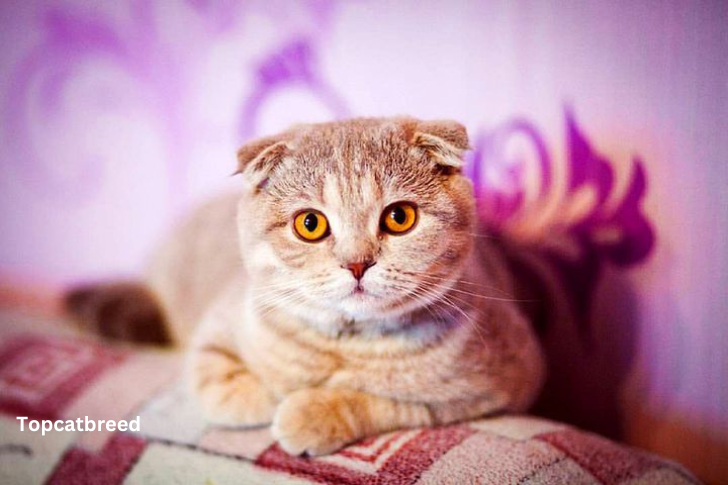
They are First discovered in Scotland in the 1960s, the Scottish Fold cats are known for their unique folded ears and sweet, gentle personalities, making them beloved pets worldwide. Scottish Folds are renowned for their unique folded ears, giving them an endearing and distinctive appearance. Their sweet-tempered and adaptable personality makes them great companions for families and individuals alike. Their folded ears create a look of perpetual curiosity and interest.
They typically form harmonious relationships with other pets and children. Due to their dense coat, regular grooming may be necessary, but their affectionate nature positions them as beloved choices for many households.
Size: Scottish Folds are of medium size, with a well-proportioned and friendly build.
Weight: They typically weigh between 6 to 13 pounds, making them sturdy yet agile.
Lifespan: These delightful felines generally live for 13 to 15 years, providing years of loyal companionship and affection.
11-American Curl
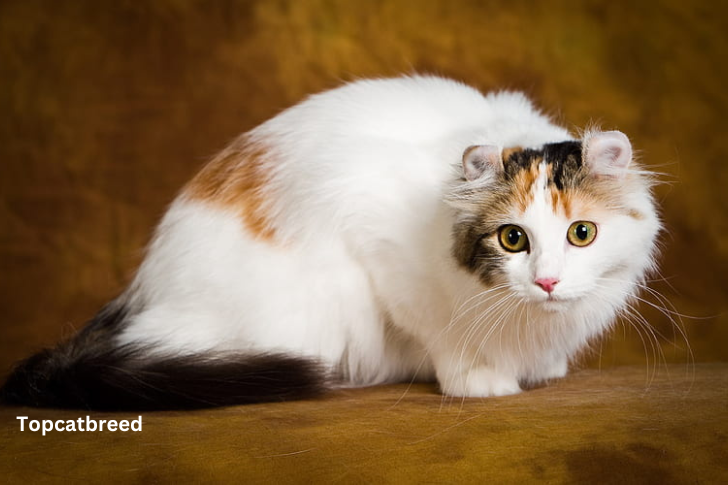
American Curl is Originating in California in the 1980s, American Curls are known for their unique curled ears and friendly disposition. The American Curl is a unique and charming breed, distinguished by their signature curled ears. These medium-sized felines are both sturdy and agile. They make excellent family pets due to their affectionate and gentle nature.
Size: American Curl cats are of medium size, typically standing around 8 to 10 inches tall at the shoulder.
Weight: These cats are usually quite sturdy for their size, with an average weight ranging from 5 to 10 pounds.
Lifespan: American Curls are known for their relatively long lifespan. They live for an average of 12 to 16 years, which means they’ll be your faithful companions for the majority of your life. One of their most cherished characteristics is their steadfast companionship.
12-Balinese Cat
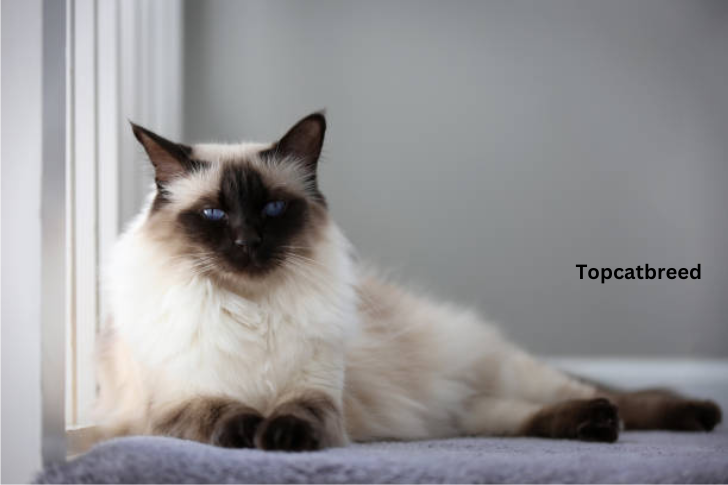
Balinese Cats are breed in the mid-20th century; Balinese cats have long, silky coats and affectionate personalities Balinese cats are renowned for their elegance and striking appearance, often reminiscent of Siamese cats, reflecting their well-muscled yet slim physique. Cherished for their affectionate nature and vocal tendencies, these cats frequently form strong bonds with their human companions.
A long-haired variant of the Siamese, the Balinese cat is elegant with striking blue almond-shaped eyes. Known for their vocal nature and intelligence, they enjoy interactive play and socializing. Regular grooming is necessary to maintain their luxurious coat.
Size: Balinese cats are medium-sized with a slender yet well-proportioned build. They typically measure around 9 to 11 inches in height at the shoulder.
Weight: Despite their graceful appearance, they are sturdy cats. On average, Balinese cats weigh between 5 to 10 pounds.
Lifespan: One of the remarkable aspects of the Balinese breed is their long lifespan. These cats often live for 15 to 20 years, ensuring enduring companionship.
13-Japanese Bobtail
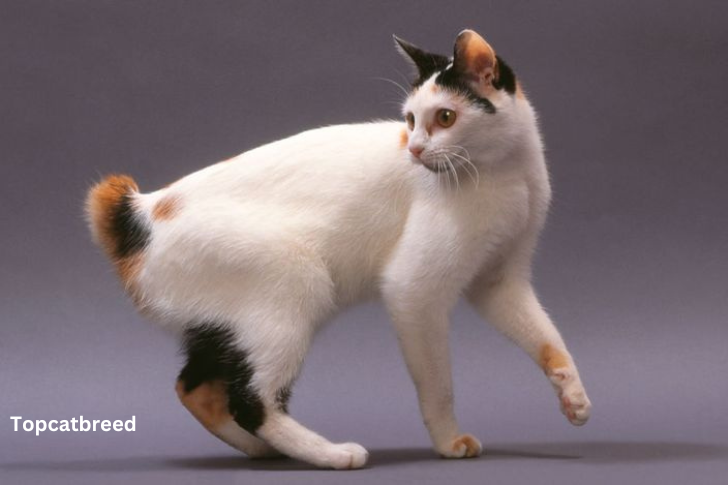
Japanese Bobtails have a long history dating back over a thousand years. Known for their short, bobbed tails and sociable nature, Japanese Bobtail cats exhibit a playful and affectionate demeanor, attributed to their distinctive bobbed tails and expressive ear. They are small to medium in size, with an agile build, and weigh 6 to 12 pounds on average. These cats are intelligent and sociable, making them loving and interactive companions.
A long-haired variant of the Siamese, the Balinese cat is elegant with striking blue almond-shaped eyes. Known for their vocal nature and intelligence, they enjoy interactive play and socializing. Regular grooming is necessary to maintain their luxurious coat.
Size: Japanese Bobtail cats are of small to medium size, known for their agile and well-proportioned build. They typically measure around 7 to 10 inches in height at the shoulder.
Weight: Despite their small to medium stature, Japanese Bobtails are sturdy cats, with an average weight ranging from 6 to 12 pounds.
Lifespan: Japanese’s Bobtails exhibit a relatively long lifespan, averaging 13 to 15 years, ensuring that they will be cherished members of your household for years to come.
CAT BRREDS WITH BIG EARS ADVANTAGES
1-Enhanced Hearing
cat breeds with big ears have a better sense of hearing. They can hear sounds that humans can’t, which help them detect prey, danger, or even your call for them.
2-Distinctive Appearance:
cat breeds with big ears often have a unique and striking appearance that many people find appealing. Their ears can be a charming and endearing feature.
3-Expressive Communication:
Large ears allow cats to express themselves better. They can move their ears to convey emotions, like curiosity, alertness, or playfulness.
4-Interactive Companions:
cat breeds with big ears are often more interactive and responsive to their owners. They can detect your voice and engage in conversations, enhancing your bond.
5-Unique Breeds
cat breeds with big ears such as the Siamese and Scottish Fold, are popular due to their distinct features. Owning one can be a source of pride as well as a conversation starter.
In summary, cat breeds with big ears offer various advantages, from heightened senses to enhanced communication, making them not only wonderful companions but also fascinating additions to your household.
Anatomy of a Cat’s Ears
cat breeds with big ears, just like us, but theirs work in a special way. While we can only see the outside part, cats have 32 muscles in each ear (we only have six!), letting them move each ear on its own. Their ears have a furry part that catches sounds and leads them inside. The ears drum inside helps turn these sounds into messages for the cat’s brain. Tiny bones in their ears make sounds louder, and the inner ear helps with balance and hearing. Cats can move their ears separately, which is why they’re so good at figuring out where sounds come from. It’s like they have super hearing!
FAQS
1-How can I tell if my cat is deaf?
Cats may show unresponsiveness to sound, loud vocalizations, or a lack of reaction to common noises such as doorbells.
2-Are white cats more likely to be deaf?
Yes, white cats with blue eyes are more prone to congenital deafness due to genetics, but deafness can affect cats of any coat color.
3. Can deaf cats live normal lives?
Absolutely, deaf cats can lead fulfilling lives. They rely on their other senses, like smell and whiskers, and can adapt well to their surroundings.
4. What causes acquired deafness in cats?
Acquired deafness in cats can result from age-related changes, infections, injuries, or exposure to loud noises.
5. How can I care for a deaf cat?
Ensure their safety, especially outdoors. Use visual cues for communication, like hand signals, and maintain regular vet check-ups for any health concerns.
Conclusion
In conclusion, understanding deafness in cats and the intricacies of their ear anatomy is essential for responsible pet ownership. Deaf cats, whether congenitally or acquired, can enjoy a high quality of life with proper care and accommodations. Vigilance in recognizing signs of deafness and providing a safe environment is crucial. Additionally, appreciating the remarkable structure of a cat’s ears, designed for both hearing and balance, allows us to admire their exceptional sensory capabilities. Overall, whether our feline companions have perfect hearing or face hearing challenges, their resilience and adaptability continue to inspire us as we provide the love and care they deserve.

